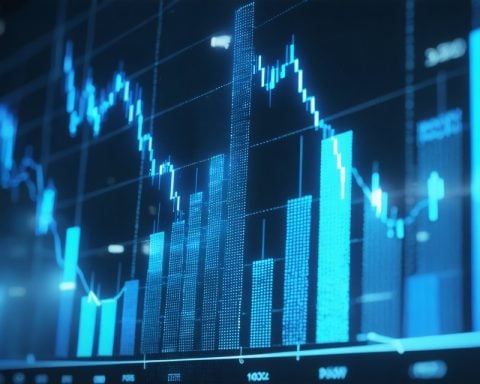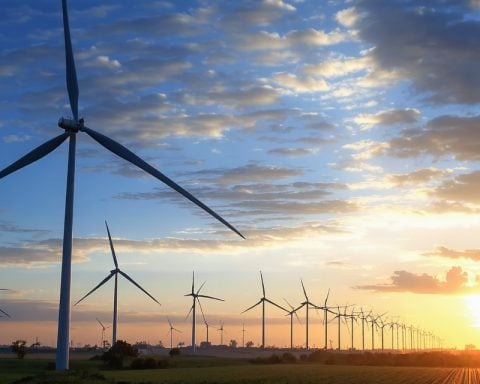Understanding Green Energy Investments
Navigating the world of green energy stocks can be tricky, especially with the surge of companies leveraging eco-friendly branding to inflate their stock values. Some of these entities may not even be operational, creating a substantial risk for investors. It’s essential to distinguish genuine players in the green energy sector.
Brookfield Renewable Partners stands out as a notable contender in this space. The Canadian company, traded as BEP.UN, focuses on renewable sources including hydro, wind, and solar energy, and even has interests in nuclear power through its ownership in Westinghouse. This diversified firm engages in utility services, supplying power to consumers across several nations.
Brookfield has demonstrated robust historic growth with a remarkable 17% revenue increase over the past year, contributing to long-term revenue compounding rates of 13%, 8%, and 13% over the previous 3, 5, and 10-year spans, respectively. While operational income growth has lagged, the rise in revenue indicates potential for future profitability.
Currently, Brookfield’s stock is valued reasonably by various metrics: trading at 6.9 times cash flow and 1.4 times book value. Additionally, a major highlight for Brookfield is its lucrative contract with Microsoft, forecasting potential annual revenues of up to $1 billion from providing power over the next 15 years. This emerging partnership could be a game-changer for the company as the renewable energy landscape expands.
Global Green Energy Dynamics: Implications and Insights
As the world rapidly shifts toward sustainable practices, the implications of green energy investments extend far beyond individual companies, impacting society and the global economy. The growing demand for clean energy solutions is reshaping energy consumption patterns, challenging traditional fossil fuel dependencies, and driving technological advancements.
Societal transformation is underway, as communities increasingly prioritize environmental sustainability. This cultural shift not only influences consumer choices but also prompts governments to implement policies that incentivize renewable energy projects. Such legislative frameworks have catalyzed job creation in the green sector, with renewable energy jobs projected to exceed 24 million globally by 2030, according to the International Renewable Energy Agency (IRENA).
From an environmental standpoint, a transition to green energy plays a critical role in mitigating climate change. The world’s energy sector is responsible for over 70% of greenhouse gas emissions. By investing in renewables, countries can significantly reduce their carbon footprints, contributing to international goals set forth in agreements like the Paris Accord.
Looking ahead, trends suggest a rapidly evolving landscape in which green energy stocks could prove resilient, even amid economic fluctuations. As technology advances and production costs decline, the renewable energy market is expected to reach $1.5 trillion by 2025. This growth signals not only economic opportunity but also a pivotal moment for shaping a more sustainable future. Ultimately, the long-term significance of green energy will depend on our collective commitment to fostering these advancements and embracing an eco-conscious worldview.
Unlocking the Potential of Green Energy Investments: What You Need to Know
# Understanding Green Energy Investments
Investing in green energy has become increasingly popular as both consumers and investors prioritize sustainability. However, with many companies entering this space, it can be challenging to discern which are genuinely committed to environmental initiatives and which are simply capitalizing on the trend. As interest in renewable energy grows, a closer examination of the landscape reveals significant opportunities and risks.
Key Players in the Green Energy Sector
In the realm of green energy investments, Brookfield Renewable Partners (BEP.UN) emerges as a significant player. This Canadian firm is dedicated to harnessing renewable energy sources, including hydroelectric, wind, and solar power, while also being involved in nuclear energy through its subsidiary, Westinghouse. Brookfield’s diverse energy portfolio ensures a strong market presence and positions it to capitalize on the global shift toward sustainable energy.
Growth Metrics and Financial Health
Brookfield has experienced impressive growth, reporting a remarkable 17% revenue increase over the past year. This is indicative of its historical performance, with long-term revenue growth compounding at rates of 13%, 8%, and 13% over the past 3, 5, and 10 years, respectively. Although its operational income growth has shown more modest results, the strong upward trend in revenue indicates substantial potential for profitability in the future.
Strategic Partnerships and Forecasts
A game-changing aspect of Brookfield Renewable Partners is its strategic partnership with Microsoft, which is projected to generate up to $1 billion in annual revenues over the next 15 years. This collaboration is significant as it underscores Brookfield’s role in the fast-evolving renewable energy market, providing essential power solutions to a major global technology leader.
Pros and Cons of Investing in Green Energy
Pros:
– Growing Demand: Increasing global demand for renewable energy sources.
– Government Support: Favorable policies and incentives encouraging renewable energy investments.
– Innovation: Continuous advancements in technology leading to increased efficiency and lowered costs in renewable energy production.
Cons:
– Market Volatility: High risk due to potential market fluctuations and the emergence of greenwashing by less credible companies.
– Regulatory Challenges: Changing regulations can impact the profitability and feasibility of renewable energy projects.
– Dependency on Technology: The reliance on technological advancements, which may not always meet expectations or timelines.
Future Trends in Green Energy Investments
As the green energy sector continues to expand, several trends are emerging. Investors are increasingly focusing on clean technology innovations, electrification of transportation, and energy storage solutions, all of which hold promise for sustainability and profitability.
Another trend is the rise of ESG (Environmental, Social, and Governance) investing, which prioritizes companies that are environmentally responsible. This focus is reshaping corporate strategies and investor decisions and is expected to drive further investment into reliable and ethical green energy firms.
Conclusion
Investing in green energy stocks, such as Brookfield Renewable Partners, presents both challenges and opportunities. By understanding the financial health, market position, and strategic partnerships of reputable companies, investors can make more informed decisions in this dynamic sector. With innovations and trends shaping the future of energy, the potential for growth in green energy investments is substantial.
For broader insights into investment strategies and sustainable practices, visit Brookfield for detailed information and updates.












